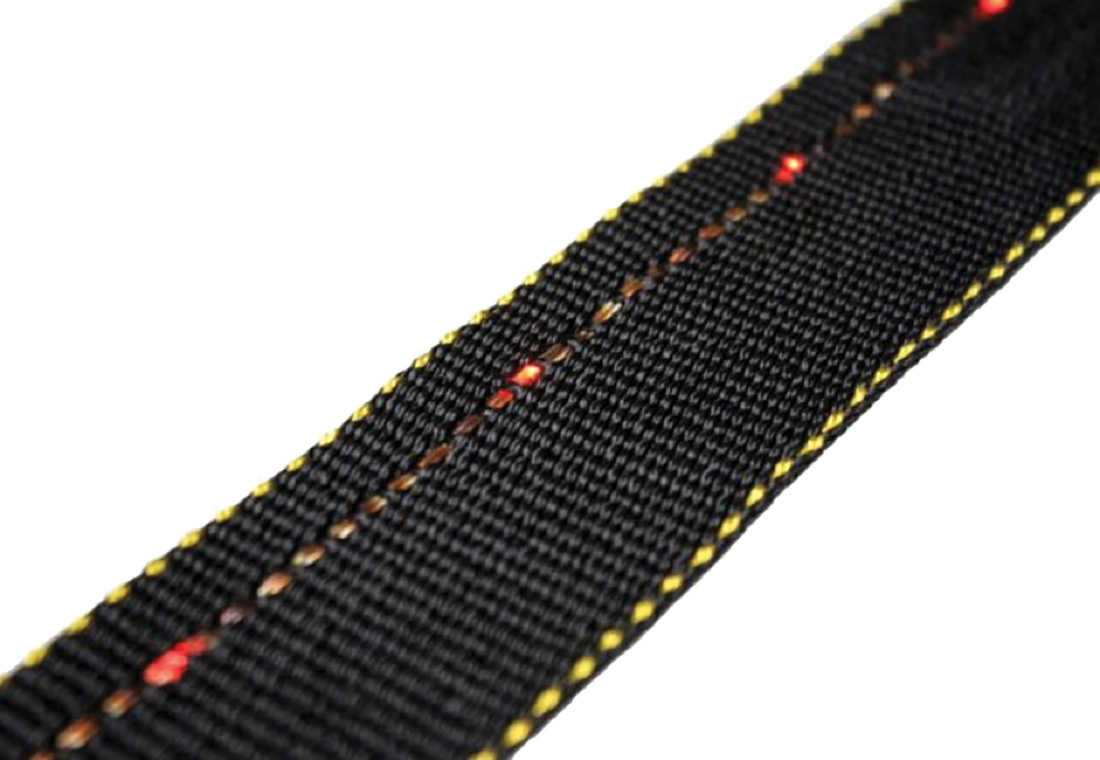I recently received a call from Yoel Fink, Ph.D., the founder of Advanced Functional Fabrics of America (AFFOA) and a professor of Materials Science and Electrical Engineering at Massachusetts Institute of Technology (MIT). Dr. Fink is leading a course called Computing Fabrics – the first class on fabrics taught at MIT in the past century – and he wanted to know if I would be open to speaking to his students.
In planning for my presentation, I learned that MIT is pioneering research advances that will enable the embedding of hundreds of thousands of chips within fibers. Concurrently, it is working on integrating these new fibers into established methods of fabric consolidation at industrial scale.
What is an ‘intelligent fiber’?
An intelligent fiber is one that is functionalized by the integration of technologies. These electrical enhancements enable the fiber to be amalgamated into a structure that ultimately can become a computing environment itself. An integrated technology would enable a structure of intelligent fibers to process information, network and store data and/or broadcast information. Additionally, the embedded electronics have the capability to sense the environment, communicate, store and convert energy and many other applications.
Applications
Intelligent fiber technology has its roots in the military, and traditional smart fabrics include carbon fiber sensors and other conductive fibers, which have been developed into sensors or used as an interconnection substrate. The U.S. Army, for example, has been exploring commercial application for capacitor fibers, which store energy and can be used to power various other fibers for computing, thermal management, augmented movement, and detection of electromagnetic influence.
Intelligent fiber applications are very broad, as they can be used in ridged composite structures, as a support or within flexible assemblies like rope. MIT is working with AFFOA to help scale and increase the reliability of these new fibers. Funding for projects related to intelligent fibers is impressive, as AFFOA was recently selected by the U.S. government to establish a new Revolutionary Fibers and Textiles Manufacturing Innovation Institute, receiving more that $75 million in government funding and nearly $250 million in private investment. These investments support U.S.-based, high-volume production of new fiber and textile technologies.
Material considerations
When selecting materials for intelligent fiber applications, there is a lot to consider. The basic raw materials are the packaging for the technologies, and there are many ways to consolidate intelligent fibers, including weaving, knitting and nonwoven methods. The biggest challenge to commercialization is cost, which is inherently a function of powering the fiber to render it active.
Another, more subtle consideration, is maintaining the basic functionality of the engineered materials. As an example, if the intelligent fiber was configured as a garment, it would need to maintain flexibility, comfort and potentially style.
Bonus ’Tech Talk’ Video
Learn More @ inda.org/education!
Some of the first applications to emerge from intelligent fibers in the near future include intelligent fabrics that will be converted into clothing. These applications will augment and communicate health and comfort to other devices like a smart watch or cellphone. Intelligent fibers will be more than just passive materials; they will sense external stimuli and adapt through machine learning algorithms and communicate electrical signals from the heart, CO2 emissions from the skin and neural impulses. This information can be relayed to a health professional or coach to determine health and wellbeing.
A hypothetical application that I discussed in the Computing Fabrics lecture for MIT included utilizing a tri-component fiber that is configured like a coax cable with a conductive center, shielding and a protective jacket. At the nodes where these fibers intersect, a semiconductor is introduced. The net final product could be a flexible neural network that is created very quickly within a variety of processes. This means of production is significantly faster than traditional weaving or knitting and thus is significantly less expensive.
Parting thoughts
Intelligent fibers are evolving and adjusting to fill market needs. The materials of tomorrow are incorporating hardware and software into the fibers and creating a new platform for the textile industry. I’ve had the pleasure of working with North Carolina State University’s Wilson College of Textiles, and now MIT, and the work that both schools and industry are accomplishing is simply amazing. Fibers woven into fabrics are some of the oldest forms of human expression, and they are poised to take on new roles and responsibilities as they are engineered to interact and react with the environments in which they are utilized.
As INDA’s director of education and technical affairs, Chris presents regular training related to nonwovens and filter media from INDA headquarters in Cary, NC. For more information about upcoming training opportunities, visit inda.org/education.
* International Fiber Journal is owned by INDA, Association of the Nonwoven Fabrics Industry (inda.org).


